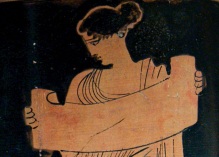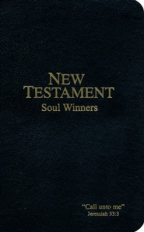 I love autumn and watching God’s creatures go about their business. There is plenty we can learn observing nature. While doing yard-work this week I witnessed Canada geese in formation hastening noisily to their southern retreat. Around the house my wife’s purple asters are filled with foraging bees. My kids enjoy watching the bees, (my dogs enjoy snapping at them). Sometimes we like to look at them with a magnifying glass. The whole family loves to watch the hive installation at the Franklin Public Library as well.
I love autumn and watching God’s creatures go about their business. There is plenty we can learn observing nature. While doing yard-work this week I witnessed Canada geese in formation hastening noisily to their southern retreat. Around the house my wife’s purple asters are filled with foraging bees. My kids enjoy watching the bees, (my dogs enjoy snapping at them). Sometimes we like to look at them with a magnifying glass. The whole family loves to watch the hive installation at the Franklin Public Library as well.
This past weekend while visiting Pittsburgh we happened to catch a lecture on bees at the Heinz History Museum. It was fascinating to learn about the behavior of bees in the hive. I have heard of the “waggle dance” which is their way of telling others where they just found some great pollen and nectar. We have seen the dance many times at the library. But what I didn’t know is that they also have other “dance moves.” They have a grooming dance which is their way of asking for help from the hive to either take care of mites on her back or clean some pollen off some hard to reach areas. There is also the tremble dance which is akin to a coach’s huddle encouraging each other with a vigorous pat on the back to get out there and produce for the good of the colony.
 Positive communication goes a long way. Just as the bees use positive and helpful dialogue so do those geese flying overhead. Have you ever wondered why they are so noisy? I thought maybe they were complaining, “Are we there yet?” or, “He should have taken a left at that second cloud.” What researchers have discovered is something the opposite of the ways human talk and travel – they are encouraging the leader. See the geese use the formation to reduce air resistance for the flock but the one in the lead thus must work harder than the others. They aren’t complaining, they are cheering their champion through the resistance.
Positive communication goes a long way. Just as the bees use positive and helpful dialogue so do those geese flying overhead. Have you ever wondered why they are so noisy? I thought maybe they were complaining, “Are we there yet?” or, “He should have taken a left at that second cloud.” What researchers have discovered is something the opposite of the ways human talk and travel – they are encouraging the leader. See the geese use the formation to reduce air resistance for the flock but the one in the lead thus must work harder than the others. They aren’t complaining, they are cheering their champion through the resistance.
I think humanity needs some encouragement these days. Everyone seems to be bashing, muttering, complaining, and posting on social media. When the company is going well the praises are few and far between because well, it is supposed to be that way. Once production decreases then the meetings begin with reprimands. The Country, company, church or couples need plenty of positive communication.
This country needs a morale booster. Your neighbor, your church volunteer, your young and old need some tremble dancing. They also need to know that a grooming dance won’t receive ridicule but rather a faithful friend to help. And it starts with one to set the example.
 We are on this faith journey together. Let us, “encourage one another daily” (Hebrews 3:13). Those receiving the most resistance need our honking approval. Let’s goose our flying V with encouragement. Where others bicker and complain let us “be the bee” cheering on the hive. We’ve got this!
We are on this faith journey together. Let us, “encourage one another daily” (Hebrews 3:13). Those receiving the most resistance need our honking approval. Let’s goose our flying V with encouragement. Where others bicker and complain let us “be the bee” cheering on the hive. We’ve got this!

 One question we should have with the above information is, “Why?” I mean the Romans used scrolls. So did the Greeks, the Arabs, and the Jews. All religious writings in Europe, Western Asia, and the Middle East used scrolls excluding the Early Church. This made us very unique, “people of the book.” One prominent reason was the study of the Old Testament.
One question we should have with the above information is, “Why?” I mean the Romans used scrolls. So did the Greeks, the Arabs, and the Jews. All religious writings in Europe, Western Asia, and the Middle East used scrolls excluding the Early Church. This made us very unique, “people of the book.” One prominent reason was the study of the Old Testament. A scroll was cumbersome to unravel in order to find a passage and had no easy way to save your place as you rolled over the original passage. Thus, a book was created so Jews (who knew their Scriptures could then verify the Gospel), and Gentiles (who were not so familiar) could keep their finger in the New and look up the source in the Old.
A scroll was cumbersome to unravel in order to find a passage and had no easy way to save your place as you rolled over the original passage. Thus, a book was created so Jews (who knew their Scriptures could then verify the Gospel), and Gentiles (who were not so familiar) could keep their finger in the New and look up the source in the Old. I’m also reminded that our faith is a reasoned one based on thousands of years of prophetic literature. The Old is important in amplifying the New. Paul used a “Soul-Winner’s Old Testament” to evangelize; could we? Let us embrace the Christian history behind “the book.” And let us use it as intended by Paul who exhorts us to read, “The full councel of God.”
I’m also reminded that our faith is a reasoned one based on thousands of years of prophetic literature. The Old is important in amplifying the New. Paul used a “Soul-Winner’s Old Testament” to evangelize; could we? Let us embrace the Christian history behind “the book.” And let us use it as intended by Paul who exhorts us to read, “The full councel of God.”